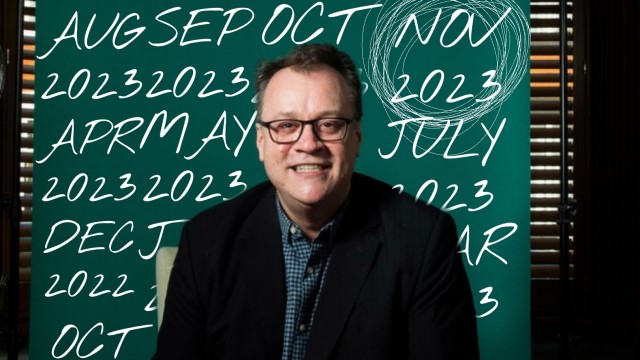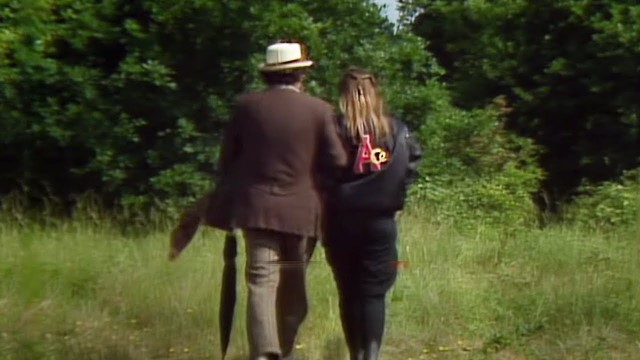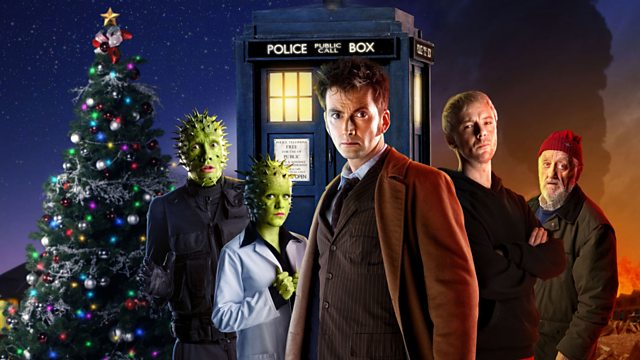Following Jodie Whittaker’s regeneration, we’ll have a 13 month wait to meet the Fourteenth Doctor, the longest Doctor Who gap year of recent times.

The Thirteenth Doctor’s time is almost done. And as post-production on Jodie Whittaker’s exit from the TARDIS this October continues, Russell T Davies has already begun writing the Fourteenth Doctor’s first adventures ahead of their debut in November 2023.
But a quick count on our fingers tells us that Doctor Who is heading for the longest break from our screens since it returned in March 2005. 13 solid months without the Doctor scarcely bares thinking about it. But it’s not the first time the show has had to bounce back from unprecedentedly long absences.
Doctor Who fans faced their first six month absence between seasons as the show geared up for the arrival of Jon Pertwee and colour
Back in the 1960s, Doctor Who was produced on a punishing schedule very nearly all year round. The break between Season One and Season Two wasn’t exactly a Doctor Who gap year – it was a mere seven weeks. It was a pattern that held true for the rest of William Hartnell and Patrick Troughton’s time in the role, with each new season following only seven to 10 weeks after the last.
So it must have been a shock to the system for Doctor Who’s most loyal fans when it disappeared for just over six months between June 1969 and January 1970. The UK debut of a certain new science fiction series called Star Trek may have taken over Doctor Who’s regular slot to tide them over (and whatever happened to that?) but, in an era when production updates were all but non-existent, it must have felt like an eternity. Indeed, many viewers may have wondered if their favourite show was ever coming back at all.
When it did return it had an all new cast (save for the promotion of previous guest star Nicholas Courtney to series regular as the Brigadier), a stylish new logo, a new concept in the Doctor’s exile to Earth. And it was in colour! The statement of intent that Doctor Who was back, and it meant business, couldn’t have been clearer. And while it may have been a response to industrial action at Television Centre rather than deliberate planning, the making of opening story ‘Spearhead from Space’ entirely on location and on film added to the sense of Doctor Who as a glossy new adventure show, rather than an old reliable in its seventh year.
This technically sophisticated new incarnation of the show led by incoming showrunning team of producer Barry Letts and script editor Terrance Dicks required substantially more pre-production and post-production work than ever before. As a result, Doctor Who aired 20-26 episodes a year in the 1970s, usually with a six month break between seasons – hardly a Doctor Who gap year.
The dawn of the 1980s, and the launch of Season Eighteen’s bold new vision for the show gave us Doctor Who’s longest ever time off screen up until that point. This was partly the result of industrial action forcing Season Seventeen to finish six weeks early, but even that fell short of being a Doctor Who gap year at a mere eight months.
In 1985, an 18 month hiatus led to an angry reaction from fans and a national campaign by the press to save Doctor Who
Fans would be faced with the first true Doctor Who gap year in 1985. Though the time between seasons had increased again to a new standard of nine months off air, after Season Twenty-Two there was an unprecedented wait for the Sixth Doctor’s next adventures. Ultimately, fans would have to wait almost 18 months from March 1985 to September 1986. And this time Doctor Who very nearly didn’t come back at all.
Then BBC One controller Michael Grade was infamously antagonistic towards Doctor Who. He had a strong personal dislike of the show and, despite the fact that viewing figures had actually been holding reasonably steady in recent years, successfully argued that science fiction shows were too expensive to produce relative to the audiences they brought in. As a result, a high level decision was made to cancel Doctor Who.
However, behind the scenes, producer John Nathan-Turner leaked the news to the papers, along with facts and figures proving Doctor Who’s worth, before the BBC could pave the way for an announcement. Caught on the back foot by extremely bad press from the media, and an angry fan campaign to save the show, the BBC backtracked and claimed they had only ever intended to ‘rest’ the show before its latest relaunch.
But the months of uncertainty over whether or not Season Twenty-Three would be going ahead at all, and in what form, caused that 18 month hiatus. And it remains, even now, Doctor Who’s longest time off air while actively in production – a Doctor Who gap year and a half!

Doctor Who’s cancellation in 1989 would take the Doctor from us for almost five and a half years, but fan creativity led the way
Although Michael Grade himself had by then moved on, his dream of a world without the Doctor was finally realised in December 1989 when the final episode of Doctor Who’s original run aired. This time the BBC were more careful to control the narrative, and firmly maintained at first that Doctor Who was simply on an extended hiatus while new production partners were found to reinvigorate the show.
But it would ultimately be five years, five months, and three weeks before the TARDIS would materialise on British televisions again for a new adventure. Perhaps surprisingly, though, these “Wilderness Years” would become one of the most creative and experimental eras in Doctor Who history. Virgin Publishing obtained a licence to produce new novels set in the Doctor Who universe and their New Adventures range would attract an influx of exciting new voices to create stories billed as “deeper and broader” than anything possible on television.
The loyalty of fans would also keep Doctor Who Magazine in print as it delved ever deeper into the details of the show’s history, while a new generation would learn their skills writing, producing and starring in direct to video films like P.R.O.B.E. and Downtime, set in the Doctor Who universe.
The TV Movie brought Doctor Who back for one night only, but the eight years before its resurrection would see the rise of Big Finish
The TV Movie of Doctor Who arrived in 1996, with Sylvester McCoy handing over the key to the TARDIS to Paul McGann. But despite high ratings in the UK, the American co-production filmed in Canada did not result in a new series and the Doctor proved to be back for one night only. Fans settled in for another epic wait. And while the general feeling about the show’s television return was more pessimistic than ever, the rush towards alternative futures for Doctor Who only accelerated. BBC Books brought the Doctor Who licence home for a new ongoing series of novels starring the Eighth Doctor.
Big Finish Productions obtained an official licence to produce Doctor Who on audio (many of the same team having been making unofficial audio adventures for some years.) Before long, the eras of the Fifth, Sixth and Seventh Doctors were being regularly revisited with the original casts, while the Eighth Doctor’s audio series became the official ‘present’ of the Doctor Who universe, allowing the series to continue on, TV show or no TV show, perhaps forever.
‘Scream of the Shalka,’ an animated BBC webcast starring Richard E Grant as the Ninth Doctor, even opened the door to new faces and new lives.
But, as we all know, fandom collectively fell out of its chair in amazement as the BBC announced Doctor Who was coming back to TV at last in 2005, eight years after the TV Movie. Jane Tranter had been made the BBC’s head of drama commissioning in 2000 and was a huge admirer of the Channel 4 dramas created by a certain Russell T Davies.
But as she attempted to coax Davies to come and join the BBC, he had a condition – Doctor Who. Soon, she was convinced that not only would Davies be a huge asset, but also that the time was perfect for Doctor Who’s return.

In 2009, the term ‘Doctor Who Gap Year’ was coined for the first time, though irregular gaps between series would soon become the norm
Under Davies, the new Doctor Who soon fell into a regular pattern of airing for three months in the Spring followed by a Christmas Special, meaning a new episode was never more than six months away. Even in 2009, as the transition from Davies to his successor Steven Moffat led to the coining of the term ‘Doctor Who gap year,’ new episodes were never far away. It was the first year since the show’s return than there was no new series on air.
But the four specials that were also David Tennant’s farewell to the role were spaced out so that even the longest gap – between Easter’s ‘Planet of the Dead’ and November’s ‘The Waters of Mars’ – was only seven months. And the general tone was one of celebration, and a bittersweet farewell to the much loved David Tennant as Doctor Who enjoyed some of its highest ever ratings.
Steven Moffat’s era would require further gaps, with only one episode airing in 2016
Moffat was more experimental in his scheduling of Matt Smith’s series, with both Series Six and Series Seven split in two, with a small gap of a couple of months in the middle. For the most part, this meant new Doctor Who was often only two to four months away.
However, the move from the by-then traditional spring slot to the autumn left the show off-air for nine months between ‘The Doctor, the Widow and the Wardrobe’ and ‘Asylum of the Daleks,’ the longest gap of the 21st century at that point.
But soon the changeover from one production team to another would again create the need for a Doctor Who gap year. By 2016, Steven Moffat had decided to move on and Chris Chibnall had accepted the BBC’s offer of becoming the new Doctor Who showrunner. But Chibnall’s commitments to ITV’s massive hit Broadchurch dictated that his version of Doctor Who couldn’t arrive until 2018 at the earliest.
In response, Moffat adjusted his own plans to reduce the amount of time the show would lose. The result would be 2017’s Series Ten, and the creation of new companion Bill Potts. But despite these efforts, it would still leave 2016 with only one episode – the Christmas Special ‘The Return of Doctor Mysterio.’ And, as a result, a there was a full 12 month gap between it and previous Christmas Special ‘The Husbands of River Song.’
That record would be equalled again in 2019, when there was only one episode of Doctor Who – the New Year’s Day Special ‘Resolution’ – with Series 12 not following until New Year’s Day 2020 with ‘Spyfall Part One.’ That said, the pandemic made wait between ‘Revolution of the Daleks’ and the start of ‘Flux’ in 2021 feel more like 10 Doctor Who gap years.

As Russell T Davies and the Fourteenth Doctor wait in the wings, the longest Doctor Who gap year since 2005 is on the way
But soon we’ll have a new record holder. While most of the previous so-called Doctor Who gap years have actually seen gaps of less than 12 months, we will likely to have to face a wait of a year and a month before meeting the next Doctor. And with only two episodes to tide us over in the rest of 2022, that’s only three episodes across 22 months.
But this time, the dominant mood appears to be one of anticipation. Russell T Davies is on his way back, and even with no Doctor Who actually on television until November, the 60th Anniversary year is set to be a year of exciting news and developments at every turn.
How are you planning to spend the Doctor Who gap year while Series Fourteen is being made? Will you be catching up on your Big Finish listening, feverishly absorbing every new piece of filming news, or just going outside to see the world? Let me know in the comments below/

Doctor Who Thirteenth Doctor scarf – order now from the Lovarzi shop!







1989 to 1996 is six years, not five!